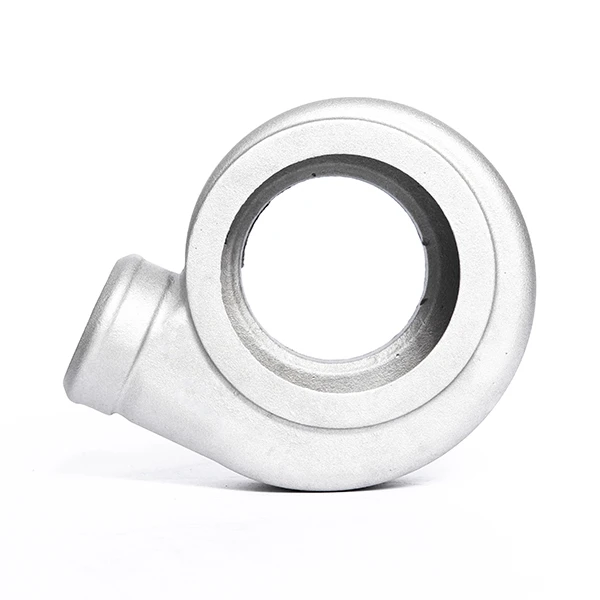Mobile:+86-311-808-126-83
Email:info@ydcastings.com
Optimizing Dispersion with Blade Impellers for Enhanced Fluid Mixing Efficiency
Understanding Dispersion Blade Impellers A Comprehensive Overview
In the world of industrial mixing and processing, the choice of mixing equipment plays a crucial role in determining the efficiency and effectiveness of various operations. One such pivotal equipment is the dispersion blade impeller, an innovative design that has gained prominence for its ability to achieve homogeneous mixtures, especially in applications where high shear and dispersing capabilities are required. This article delves into the functionality, applications, and advantages of dispersion blade impellers, elucidating their importance in modern industrial practices.
What is a Dispersion Blade Impeller?
A dispersion blade impeller is a specially designed type of impeller used in mixing applications where the objective is to disperse solid particles within a liquid or to break up and homogenize viscous materials. Unlike traditional propellers, which primarily create a simple flow pattern, dispersion blades are engineered to generate both radial and axial flow, significantly enhancing the mixing process. The design typically features a series of angled blades that create turbulent flow, effectively inducing shear forces that facilitate dispersion.
Key Features and Functions
The effectiveness of dispersion blade impellers can be attributed to several key features
1. High Shear Rates The blade geometry is optimized to create high shear rates, which is critical for achieving uniform dispersion of solids in liquids. This is particularly important in industries such as pharmaceuticals and food production, where consistency and quality are paramount.
2. Versatility Dispersion blade impellers can be used across a variety of applications, from mixing paints and coatings to emulsifying food products and pharmaceuticals. Their versatility makes them a valuable tool in many industrial settings.
3. Dual Flow Patterns By generating simultaneous radial and axial flow, dispersion blades can enhance the circulation of materials, ensuring that every part of the mixture is uniformly processed. This is particularly beneficial in large-scale mixing operations where dead zones can lead to uneven mixtures.
4. Customizability Dispersion blade impellers can be tailored to specific applications. Modifications can be made in size, angle, and shape to optimize performance for particular materials, whether they be low-viscosity liquids or high-viscosity pastes.
Applications of Dispersion Blade Impellers
Dispersion blade impellers find usage across various industries, including
dispersion blade impeller

- Chemical Processing In the chemical industry, these impellers are essential for mixing reactive components and ensuring homogeneity in formulations.
- Pharmaceuticals High shear mixing is crucial in drug formulation. Dispersion blade impellers help achieve consistent particle size and uniform distribution of active ingredients.
- Food and Beverage In the food industry, these impellers facilitate the preparation of emulsions and suspensions, ensuring products like sauces and dressings have a smooth, uniform texture.
- Cosmetics For cosmetic products that require precise mixing and emulsification, dispersion blade impellers provide the necessary shear to create stable formulations.
Advantages of Dispersion Blade Impellers
The adoption of dispersion blade impellers offers numerous advantages
- Efficiency Their ability to create high shear and turbulent mixing allows for faster processing times, which can lead to increased productivity.
- Quality Control The uniformity of mixtures achieved by dispersion blade impellers translates directly to improved quality in end products, meeting stringent industry standards.
- Energy Savings With efficient mixing capabilities, less energy is required to achieve the desired results compared to traditional mixing methods, resulting in cost savings.
- Reduced Processing Time The ability to rapidly achieve dispersions reduces the overall processing time, enhancing throughput.
Conclusion
In conclusion, dispersion blade impellers are invaluable tools in various industrial mixing applications. Their design facilitates high-efficiency mixing processes, enabling the production of uniform and high-quality products across multiple sectors. As industries continue to evolve, the importance of employing advanced mixing technologies like dispersion blade impellers will undoubtedly grow, underscoring their role in enhancing operational efficiency and product quality in the modern marketplace. Embracing such innovations not only meets current demands but also sets the stage for future advancements in mixing technology.
-
Why Should You Invest in Superior Pump Castings for Your Equipment?NewsJun.09,2025
-
Unlock Performance Potential with Stainless Impellers and Aluminum End CapsNewsJun.09,2025
-
Revolutionize Your Machinery with Superior Cast Iron and Aluminum ComponentsNewsJun.09,2025
-
Revolutionize Fluid Dynamics with Premium Pump ComponentsNewsJun.09,2025
-
Optimizing Industrial Systems with Essential Valve ComponentsNewsJun.09,2025
-
Elevate Grid Efficiency with High-Precision Power CastingsNewsJun.09,2025











